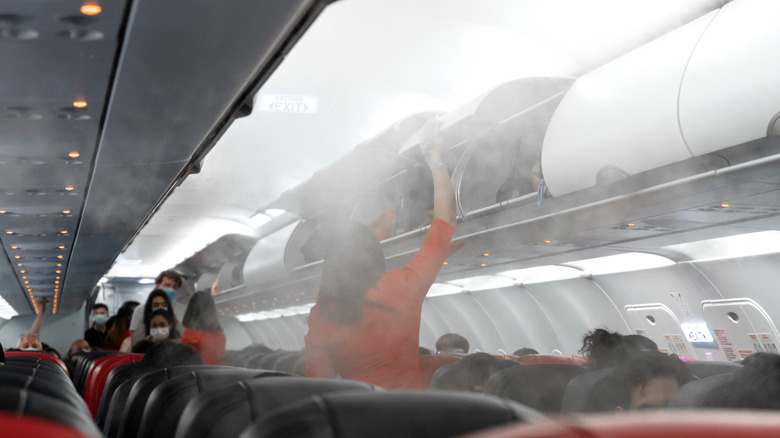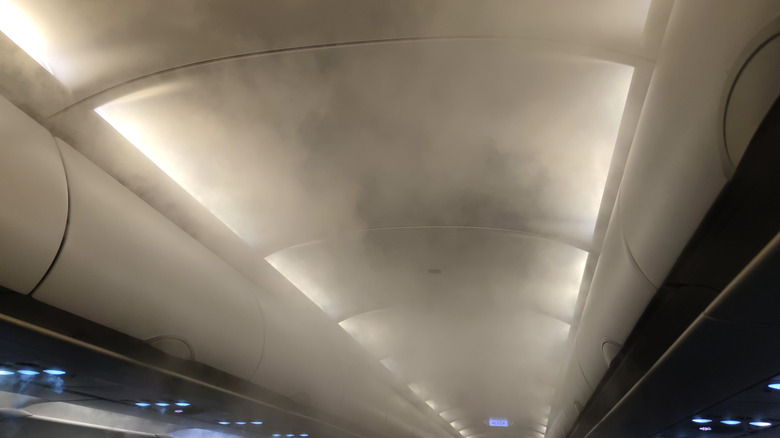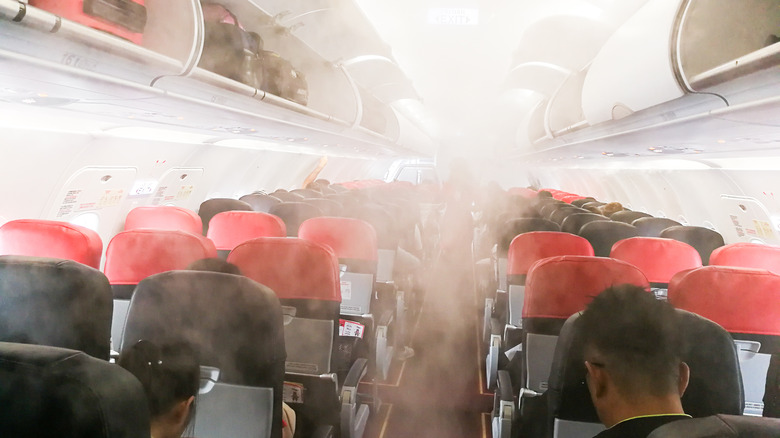Why You Shouldn't Worry When Your Plane Cabin Fills With Fog
It's easy to sympathize with nervous flyers. After all, you're strapped into an aluminum tube that's flying up to 600 miles per hour. If you're not a frequent flyer, your ears may perk and your eyes may dart at every sound, thump, and bump. While nearly all commercial flights are pretty uneventful, some incidents can occur to make the most seasoned flyer become hyper-alert.
One thing you never want to experience when flying is a cabin full of smoke. Fires in the sky aren't great. That's why you can't smoke, and tampering with the smoke detectors is a federal offense. So, if it appears that your cabin is filling up with smoke, the event can be an understandably harrowing experience. In all likelihood, however, the smoke is actually just fog, and fog-filled cabins are actually pretty common. To help cool your anxiety-fueled jets, we'll try to clear the air when it comes to foggy flights.
Fog on a flight is just science
Every few years, a new video goes viral with passengers freaking out a bit when a plane cabin begins to billow with fog. Again, we can sympathize. However, there's a very simple and scientific explanation for the misty melee. When it's warm and humid outside the aircraft, the air quickly condenses when the outside air interacts with the much cooler air on the plane. It's simply the result of two air temperatures meeting and forming water vapor.
In some cases, if the airplane's air-conditioning units are really pumping, which would occur if it's particularly hot outside, the amount of water vapor that's created can really fill the cabin quickly. While your misty surroundings may trigger your in-flight jitters and be a bit of a nuisance, the fog will typically clear within 1 to 2 minutes. And the foggy air is also completely safe to breathe. It's only water vapor and good for your larynx and karaoke.
How common are foggy flights?
If you've never experienced a foggy cabin, don't be surprised if you do in the future. The occurrence is actually pretty common, especially when the aircraft is departing from a hot, humid locale. And it does typically occur when departing, as arriving flights have been climate-controlled for a while.
Most modern airplanes actually feature a mechanism called a water separator, which is designed to prevent water vapor from forming, but if the outside conditions are particularly hot and humid, the water separator will only be so effective.
While fog in the cabin may be initially anxiety-inducing, a good way to gauge an appropriate level of fear is to watch the flight attendants. If they're business-as-usual calm, rest assured it's fog and not smoke. Overall, the fog is actually a good thing, as it indicates that your plane is cooling as it should. So, if your cabin gets a little misty flying back from your next tropical vacation, just try to stay calm and stay cool.


